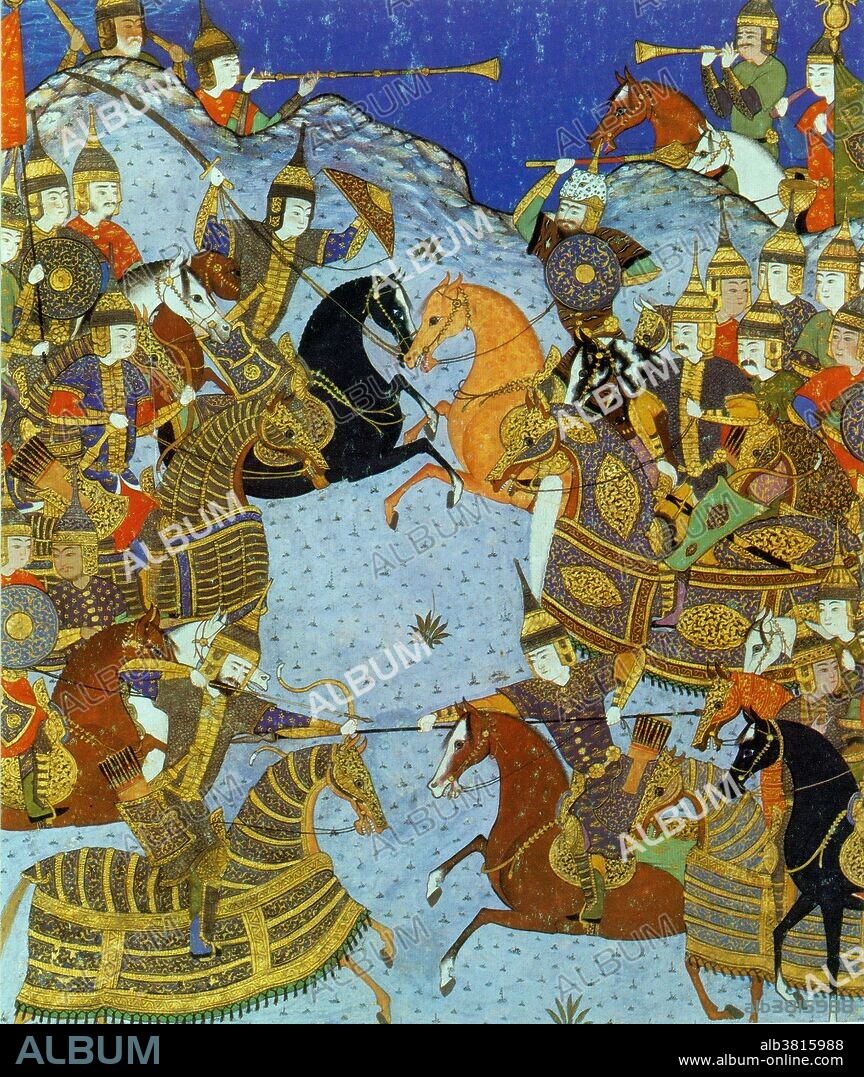alb3815988
Shahnameh, National Epic of Greater Iran

|
Ajouter à une autre Lightbox |
|
Ajouter à une autre Lightbox |



Avez-vous déjà un compte? S'identifier
Vous n'avez pas de compte ? S'inscrire
Acheter cette image

Titre:
Shahnameh, National Epic of Greater Iran
Légende:
Voir la traduction automatique
The Shahnameh, also transliterated as Shahnama (The Book of Kings), is a long epic poem written by the Persian poet Ferdowsi between 977 and 1010 AD and is the national epic of Greater Iran. Consisting of some 50,000 couplets, the Shahnameh is the world's longest epic poem written by a single poet. It tells mainly the mythical and to some extent the historical past of the Persian Empire from the creation of the world until the Islamic conquest of Persia in the 7th century. Modern Iran, Azerbaijan, Afghanistan and the greater region influenced by the Persian culture (such as Georgia, Armenia, Turkey and Dagestan) celebrate this national epic. The work is of central importance in Persian culture, regarded as a literary masterpiece, and definitive of the ethno-national cultural identity of modern-day Iran, Afghanistan and Tajikistan. It is also important to the contemporary adherents of Zoroastrianism, in that it traces the historical links between the beginnings of the religion with the death of the last Sassanid ruler of Persia during the Muslim conquest and an end to the Zoroastrian influence in Iran.
Personnalités:
Crédit:
Album / NYPL/Science Source
Autorisations:
Modèle: Non - Propriété: Non
Questions sur les droits?
Questions sur les droits?
Taille de l'image:
3418 x 4050 px | 39.6 MB
Taille d'impression:
28.9 x 34.3 cm | 11.4 x 13.5 in (300 dpi)
Mots clés:
ART PERSAN • CÉLÈBRE • CELEBRITE • ECRITURE ENLUMINURES • ENLUMINURES • FERDOWSI • GUERRE • ILLUSTRATION • IRANIEN • IRANIENNE • LITTERAIRE • MANUSCRIT ENLUMINE • MYTHES: PERSES • PERSAN • PERSE • PERSES • PERSES, MYTHES • PROCHE-ORIENT
 Pinterest
Pinterest Twitter
Twitter Facebook
Facebook Copier le lien
Copier le lien Email
Email
